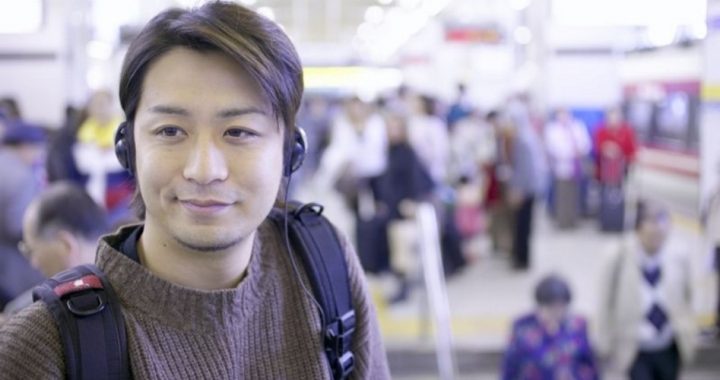
The current surveillance state has reached a place where it is beginning to resemble the 2002 film Minority Report. The Department of Homeland Security (DHS) is now attempting to predict crime by doing behavioral analysis of crowds at airports via video surveillance. The program is in the experimental stages and is being conducted using “trained actors posing as passengers, as well as members of the traveling public” according to the 14-page report published online by DHS earlier this month.
The report, which The New American has studied in its entirety, is startling not just in its audacity, but also in its premise. In the beginning of the “war on terror,” which was launched in the wake of 9/11, few would have believed that in a decade and a half the American public would have become so desensitized to blanket surveillance that such a program could ever happen in the open.
The experiment, which the DHS plans to conduct at an unspecified time at the Theodore Francis Green Memorial State Airport in Providence, Rhode Island, centers around the “Behavioral Detection Officers (BDOs)” already employed at airports around the country. These BDOs observe passengers and “are trained to identify passengers exemplifying a discrete subset of behavioral indicators” of “malicious intent” in an attempt to prevent acts of terrorism and other crimes at our nation’s airports. How effective these BDOs are is a matter of debate. How proper they are is another matter altogether. Any program that relies on spying on the behavior of all travelers to detect “malicious intent” by a few is rightly considered by many to be a breach of the proper province of government.
This new development raises exponentially the stakes in the battle for balancing the needs of security with those of liberty and privacy. The purpose of introducing video surveillance technology into this program is to expand it without expanding personnel. The BDOs will be able to conduct their surveillance from a remote location via video monitors and assess more travelers at a faster rate. Of course, this increases the privacy concerns already present by casting an even broader net and allowing the video images to be archived.
DHS attempts to address these concerns in a Privacy Impact Assessment (PIA) also published online. The New American reviewed this PIA and found the following sections concerning:
1.7 Privacy Impact Analysis: Given the amount and type of data collected, discuss the privacy risks identified and how they were mitigated.
Video recordings, without sound, of screening interviews conducted in a DHS screening environment will be collected and analyzed. The privacy risks associated with this effort exist only because the on-site interviewer knows the identity of the individual at the time of the interview. However, PHI will not have access to names or other identifying data other than the video recordings and no record of the identity of the individual will be created or sought as part of the PHI effort. As an additional safeguard during testing, the PHI collection system used in field testing will not include the use of processing algorithms onsite and will not have video display capability, thus ensuring that no information, outcomes, or results can be transferred from the PHI research to the operational environment.
So DHS claims that the Project Hostile Intent (PHI) program will not use “processing algorithms” that could identify the persons who are subjects of this program and that “no information, outcomes, or results can be transferred from the PHI research to the operational environment.” So what is all the fuss? They make it sound entirely innocuous. It is — after all — for your protection. And they are taking great pains to insure your privacy. Stop worrying. It’s fine.
Even if the deliberately calming tones and language used in section 1.7 of the PIA were true, there would be much to be concerned about. For instance, the past record of TSA agents selecting men and women for pat-downs and full-body scans based on the TSA agents’ sexual attraction to particular travelers, as well as other accounts of the abuses and failures of the agency, leave little room to take them at their word that this technology will not likewise be abused.
But even if the public is tempted — beyond reason — to take them at their word, another section of the PIA quickly disabuses them of that misplaced trust.
2.2 What types of tools are used to analyze data and what type of data may be produced?
For this testing period, the computer algorithms will be used to analyze the video images after completion of the videotaping back in the laboratory. The data produced by the algorithms will be an analysis of the individual’s behavior based on the situation and environment. Statistical analysis techniques will be used to compare the effectiveness of the computer system to the effectiveness of manual analysis of behavior during screening and against the operational outcome of screening interviews (i.e. did the system accurately identify behaviors that correlate with deception/hostile intent?). When operationally deployed, the information from the computer system will only be used to enable the screener to better determine when to ask additional questions. Asking more questions will enable the screener to determine if an individual’s behavior is related to deception or a local environmental variable. During the PHI experiment, screeners will not see or use any output of the PHI system during the actual interview process. No operational decisions will be made using PHI technology. The ultimate goal of the PHI system, when operationally deployed, will be to focus screening on individuals who the PHI system indicate are exhibiting behaviors that suggest deception and further minimize the screening process for other individuals.
After saying in section 1.7 that the video data would not use ” processing algorithms onsite” and will not “be transferred from the PHI research to the operational environment,” section 2.2 says that “computer algorithms will be used to analyze the video images after completion of the videotaping back in the laboratory.” It looks like DHS officials are talking out of both sides of their mouths again.
It is also of note that the PIA — as convoluted as it is — really addresses the privacy concerns of the program only in its testing phase. Once it is operational, the guidelines for testing won’t apply.
Setting aside the obviously hollow language of the PIA, the report on the program itself admits, “The video data collection will collect Personally Identifiable Information (PII) in the form of facial images and anthropomorphic data.” Furthermore, the video surveillance will also capture video of travelers “at designated areas throughout the airport, including a TSA security checkpoint, ticket counter, baggage claim, and airport entrance.”
So on top of having the 2015 version of Minority Report’s psychic “precogs” in the role of BDOs attempting to interpret a traveler’s irritation at being questioned by TSA agents while he is already chasing the clock trying to catch a flight as “malicious intent,” all travelers will be subjected to this type of video surveillance and analysis.
The effectiveness of this program (and of the current role of BDOs) assumes that terrorists aren’t training to appear non-plussed and casual as they go about their activities. It also assumes that all travelers are prospective terrorists. If the goal of the 9/11 terrorists was to alter life in the United States to a place where Americans are less free than before, it looks like they succeeded beyond their darkest dreams.




